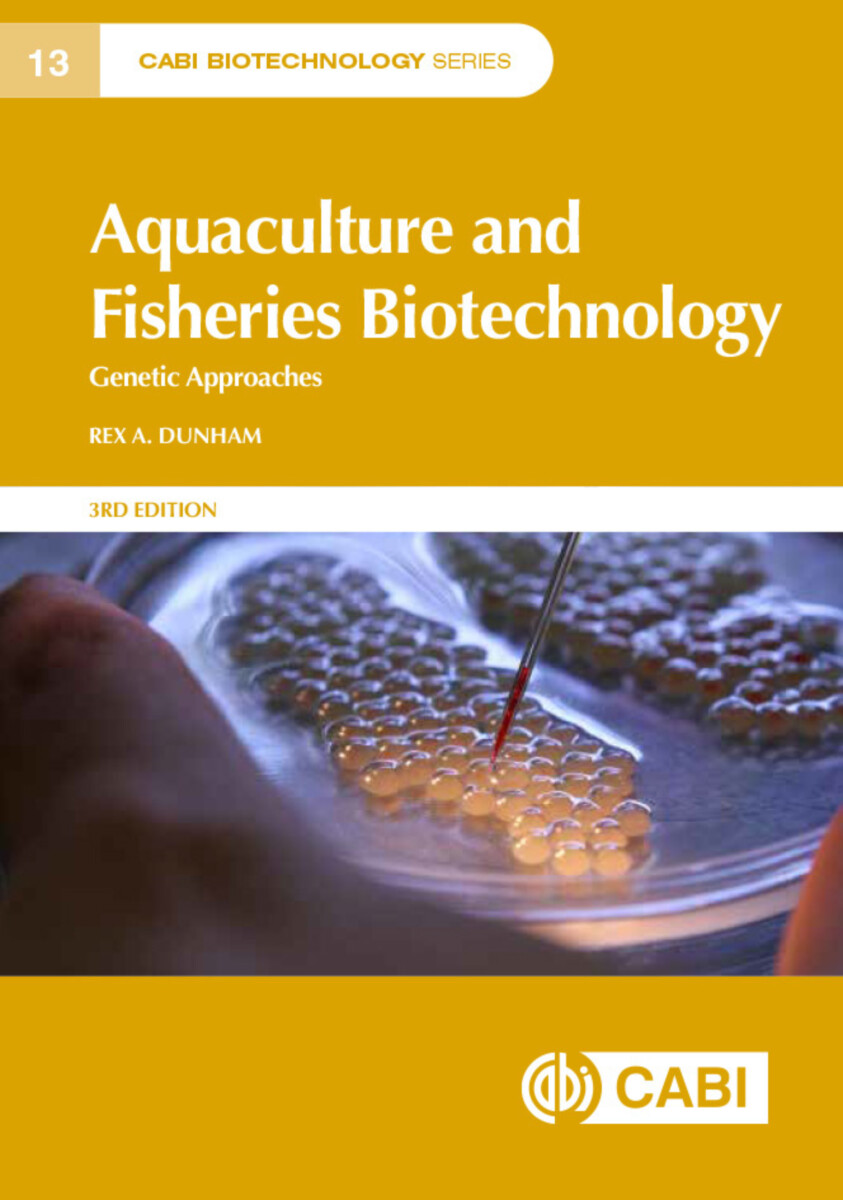Aquaculture And Fisheries Biotechnology Edition 3
Genetic Approaches
- Publisher
CABI - Published
24th March 2023 - ISBN 9781789243444
- Language English
- Pages 584 pp.
- Size 6" x 9"
The genetic improvement of fish for aquaculture and related fisheries has seen huge advances over recent years. Building upon the previous two editions of Aquaculture and Fisheries Biotechnology: Genetic Approaches, this new edition offers a presentation of traditional selective breeding, modern genetic biotechnology, genomics, gene transfer and gene editing, and the latest developments in genetic biotechnology such as epigenetics, xenogenesis and genome-wide association study coupled with commercial application, the impact of government regulation and expectations for the future. It provides a firm grounding in relevant aspects of classical genetics, before focusing on particular aspects such as sex reversal and breeding as applied in aquaculture and fisheries. It also explores how more recent molecular genetics, genomics and biotechnology techniques can be used and combined in improvement programs for fish and aquaculture species. A glossary explains the latest terminology used in biotechnology and genetics.
Rex A. Dunham
Rex Dunham is a Professor and Aquaculture Geneticist in the School of Fisheries Aquaculture and Aquatic Sciences at Auburn University. He received a B.S. from the University of Illinois in 1978, a M.S. and a PhD in Fisheries and Allied Aquacultures from Auburn University in 1979 and 1981. He has been on the faculty at Auburn University for 37 years. He also briefly served as Program Leader for the Genetic Enhancement and Breeding Program, ICLARM, Philippines, and as the President of the International Association of Genetics in Aquaculture From 2009-2012. His research team was the first to demonstrate that selection works for the genetic improvement of channel catfish, the first to release genetically improved fish (catfish) in the United States, made the first transgenic fish in the United States, conducted the first outdoor environmental risk assessment and the first outdoor evaluation of performance of any transgenic animal in the world, generated the first xenogenic catfish (channel catfish males capable of producing blue catfish sperm, a form of stem cell surrogacy), accomplished the first repressible transgenic sterilization in fish, the first targeted gene insertion in the non-coding region of a fish and the first double CRISPR knockin of 2 transgenes in the non-coding region of 2 chromosomes. His research led to two major changes in the genetic type of fish used in the US catfish industry, the last resulting in the transformation of the US channel catfish industry into a majority hybrid catfish industry.


